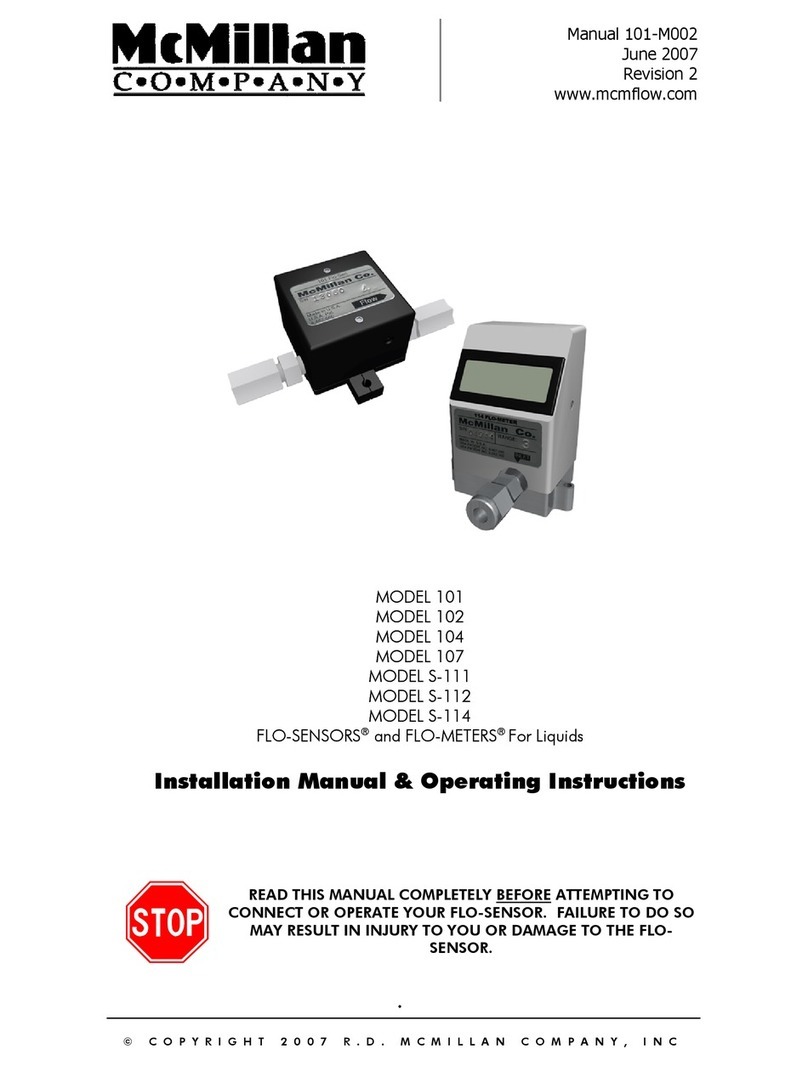
100-M004, pg. 2 of 36
TABLE OF CONTENTS
A. Introduction....................................................................................3
1. Unpacking .................................................................................3
2. Product Overview And Principle Of Operation ...............................3
3. Non-Standard Products (Z Suffixes) ...............................................4
B. Installation .....................................................................................4
1. General Considerations...............................................................5
2. Mounting the FLO-SENSOR®or FLO-METER®............................5
3. Tubing Connections ....................................................................6
4. Electrical Connections .................................................................7
a) Overview .............................................................................7
b) Connecting a Cable Assembly...................................................8
c) Electrical Connections - Voltage Output Units .............................9
d) Using a 0-5VDC Output Power Adapter Package ......................10
e) Using a 4-20mA Output Signal Converter Package (D-24VDC) ..11
C. Operation ....................................................................................12
1. Start-Up ...................................................................................12
2. Flow Readings ..........................................................................12
a) 0-5VDC Analog Outputs ........................................................12
b) 4-20mA Outputs (Using the 4-20mA Signal Converter)..............13
c) Units with an Integral Display...................................................14
3. Operating at Flow Rates Outside the Calibrated Flow Range .........14
a) Flows Above the Maximum Rated Flow.....................................14
b) Flows Below the Maximum Rated Flow .....................................14
4. Zero Adjustments ......................................................................15
5. Recalibration ............................................................................15
6. Using FLO-SENSORS®or FLO-METERS®with different Gases ........15
D. Maintenance And Product Care......................................................17
1. General ...................................................................................17
2. Cleaning and Flushing...............................................................17
3. Returning Units For Repair Or Recalibration .................................17
E. Part Number Information ...............................................................19
F. Accessories...................................................................................20
G. Specifications ...............................................................................21
H. Connector Pin and Wire Color Cross Reference ...............................22
I. Dimensions ..................................................................................23
J. Limited Warranty...........................................................................30
K. Trouble Shooting Guide.................................................................33
L. Contacting McMillan.....................................................................35




























